Your Complete Guide to Holly Trees and Berries
Updated: Dec. 08, 2022
These native plants dazzle with bright berries and glossy leaves while attracting wildlife to gardens throughout the seasons.
All About Holly Berries and Trees
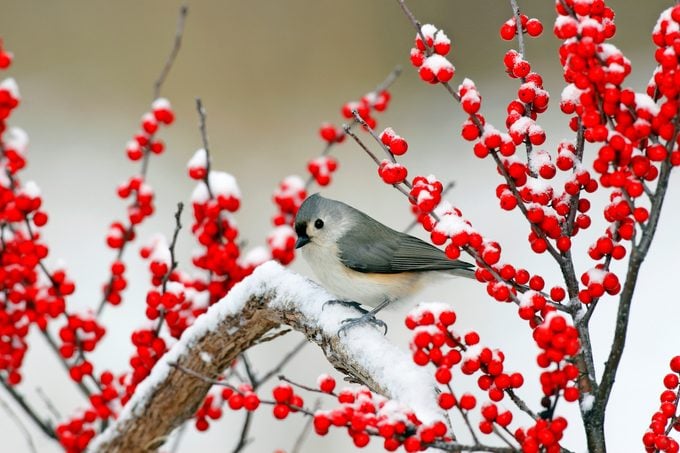
Whether you’re looking for a cultivar to stun year-round, a berry-producing powerhouse to beckon berry-loving birds, or a natural hedge to create some privacy between you and your neighbors, hollies feel at home in any landscape. Additionally, of all the decorations we hang in the winter months, holly has one of the longest and most interesting histories. Find out which holly trees are best for attracting birds. Plus, learn a few fascinating facts about holly berries and trees, too.
Discover 7 fun facts about Christmas trees.
Holly’s Festive Past
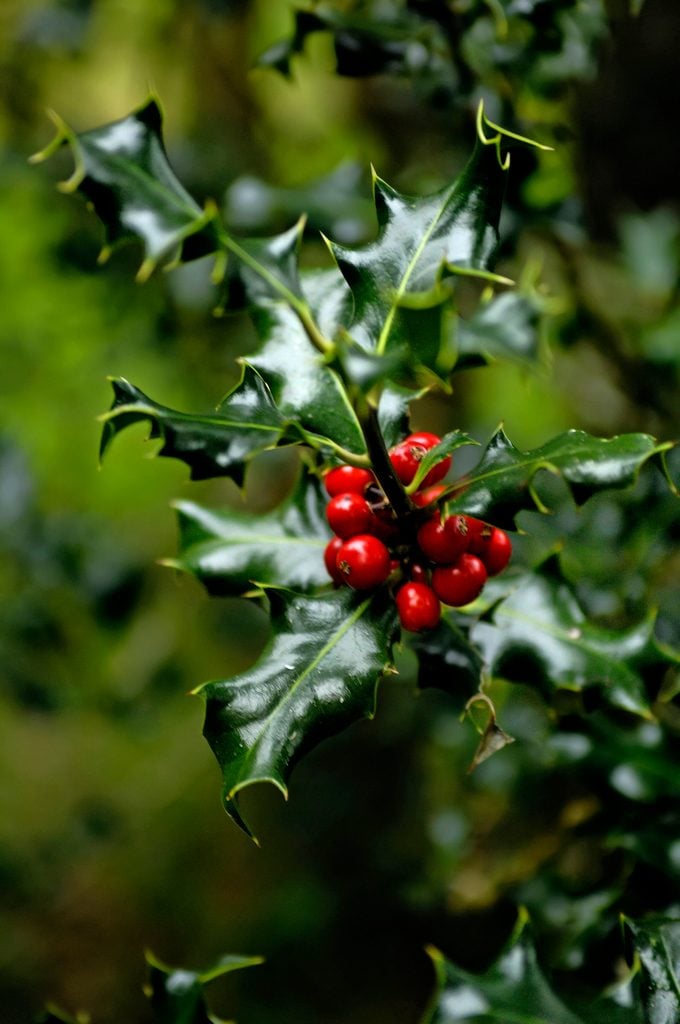
From ancient winter solstice celebrations to modern-day holiday decor, holly has been a part of our festivities for thousands of years. Long before Christians used holly to decorate their homes and churches at Christmastime, other cultures brought holly branches in to brighten things up in the winter.
Druids used holly as part of their winter solstice celebrations at least two thousand years ago. Reportedly, they believe that the Holly King, having defeated the Oak King, rules over the darker winter months. (In the summer, the Oak king rules triumphant once again.) Romans associated holly with Saturnalia, celebrated around the same time. As Christmas became more popularly celebrated in the winter, holly naturally became a part of the festivities, as well.
With its glossy green leaves that promise evergreen beauty and its bright red berries—technically drupes—English holly (Ilex aquifolium) is the plant best known for decking our halls and brightening up winter’s dark days. It is native to Europe, Asia and northern Africa and invasive in some parts of the United States. But, with so many wonderful native hollies, you have no need to plant English holly.
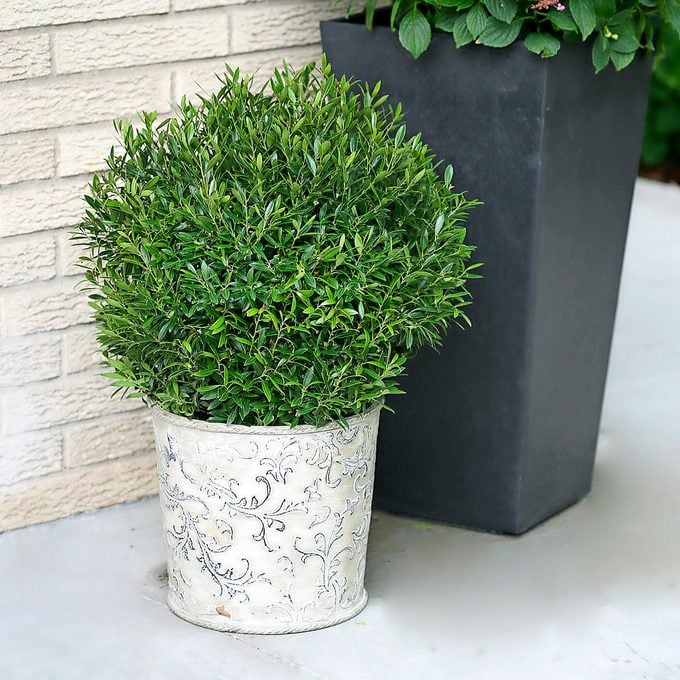
Did you know: A Christmas carol, “The Holly and the Ivy” tells the story of Christ. Although most of us only know the song’s first verse (“The holly and the ivy / When they are both full-grown” / Of all the trees in the wood / The holly bears the crown”) the later verses draw parallels between the thorny leaves and the crown of thorns Christ was said to wear, the bitter bark and his suffering, and so on. The holly referred to in the song, by the way, was English holly.
Psst—we love this Scandinavian Christmas tradition for the birds.
There Are Heaps of Holly Tree Varieties
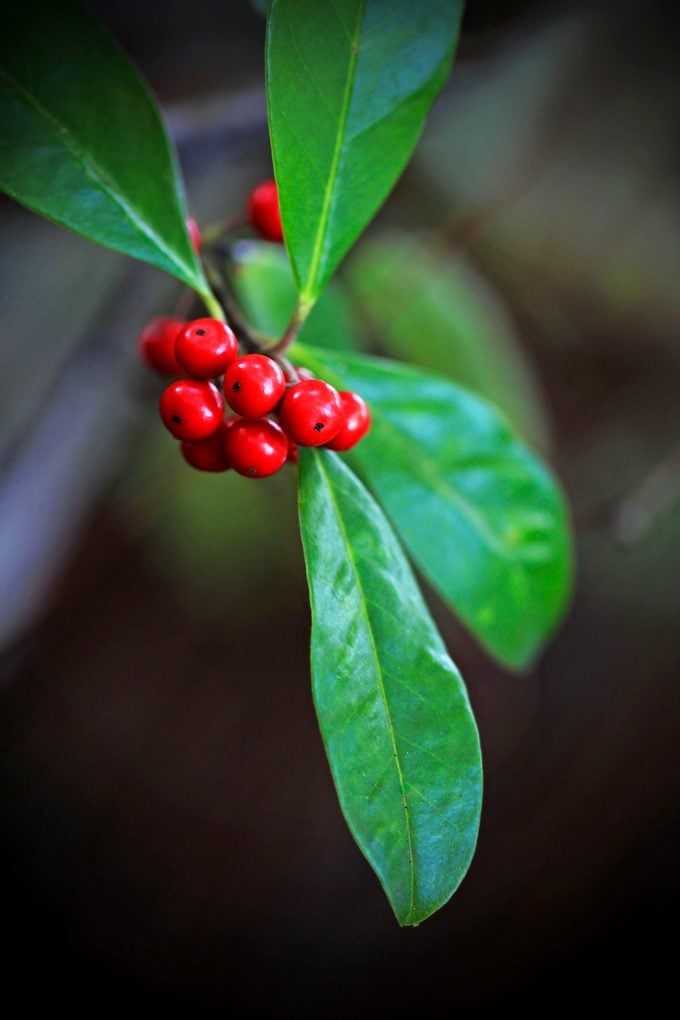
Holly varieties grow across the globe. With more than 400 species belonging to the genus Ilex, hollies thrive in tropical, subtropical and temperate zones. They share a few traits. “All hollies attract beneficial insects and pollinators in the spring when they bloom,” says Sue Hunter, who serves as president of the Holly Society of America. “The flowers on both male and female hollies have a strong, pleasant fragrance.”
In the U.S., you’ll generally find them growing in zones 6 to 10, with many native species available in most areas. (For those who think they live too far north to grow holly, look into the so-called “Blue Hollies,” a hybridized group said to be hardy to zone 4.)
Check out the top 10 easy-care holiday houseplants.
Expert Tips on How to Grow a Holly Tree
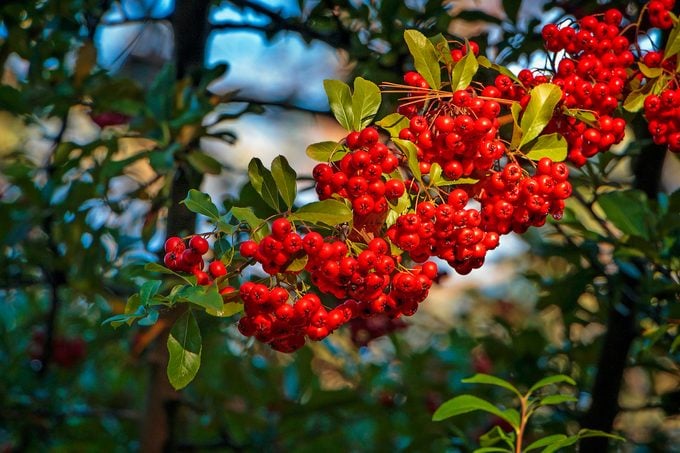
Sue says that most evergreen species of hollies are drought resistant, though American holly (I. opaca) in particular is tough. “Once established, hollies require little care,” she says. “Fertilizer can be applied in the spring or fall once plants are dormant, and pruning is done during the winter months.”
Fruit-producing hollies are usually female plants that must be pollinated by a nearby male for berries. Be sure to include one or more males for every five females, depending on the type. If you need a male plant to pollinate a female, consider Jim Dandy for early blooming and Southern Gentleman for late blooming plants.
Garden expert Melinda Myers says, “Make sure you have the right growing conditions. Hollies prefer moist, acidic soil, and evergreen hollies need shelter from winter’s cold winds and bright sun, which can both have a drying effect.”
Benefits of Growing American Holly
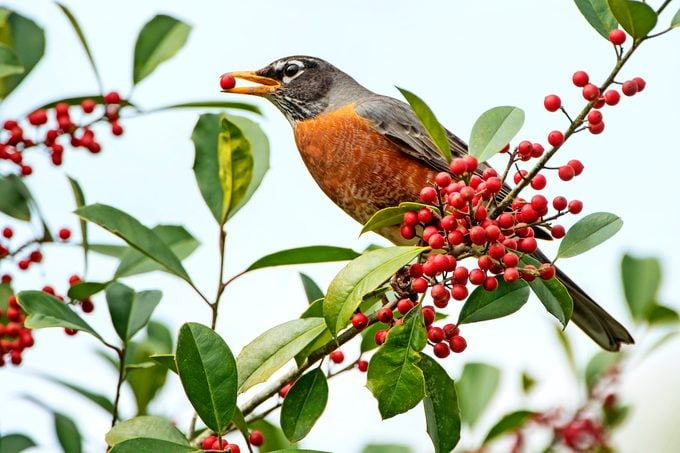
American holly is a native evergreen tree that naturally grows in deciduous forests in the central and southeastern U.S. It reaches 40 to 60 feet tall and grows in a conical shape that’s pleasing in larger landscapes from Zones 5 (with protection) to 9. American holly is also known for being resistant to wind, salt spray and deer. It is rather low maintenance, growing in either part shade or full sun. While it prefers acidic, moist yet well draining soil, it tolerates a range of growing conditions.
Recommended American holly cultivars include the heavy-fruiting Miss Helen; Dan Fenton with its large leaves and bright red fruit; Goldie, which offers eye-popping yellow fruit; and Jersey Princess with its dark, glossy leaves.
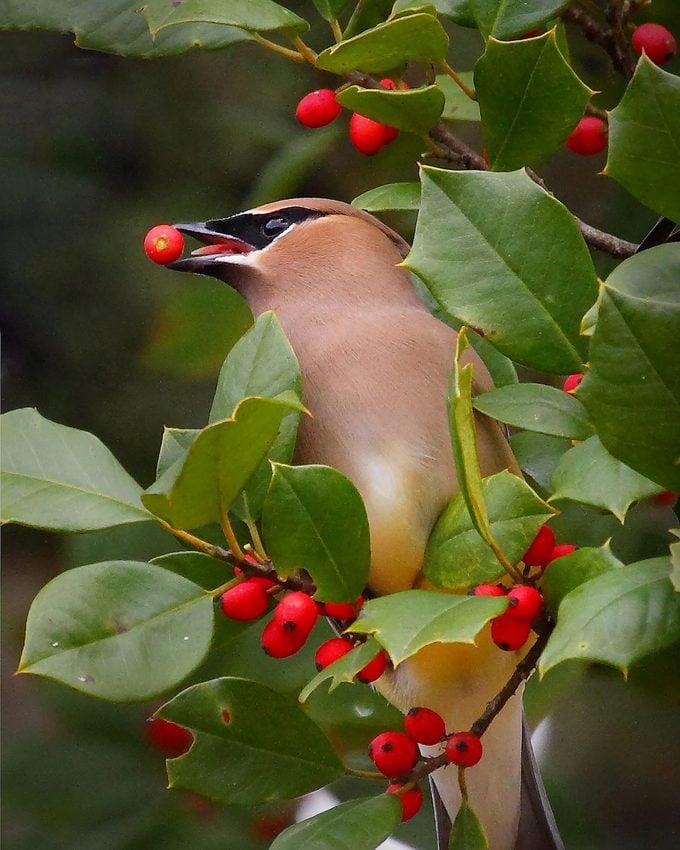
Beyond being a host plant for Henry’s elfin caterpillars, American holly also attracts butterflies and bees that swarm its greenish white flowers. Birds flock to the female plant’s bright red or orange fruits that persist through winter. Even its gray-white bark, spotted with striking red or tan lichens, garners attention. American holly’s matte leaves distinguish it from its English cousin.
Learn how to care for a Christmas cactus and help it bloom.
More Top Native Holly Picks
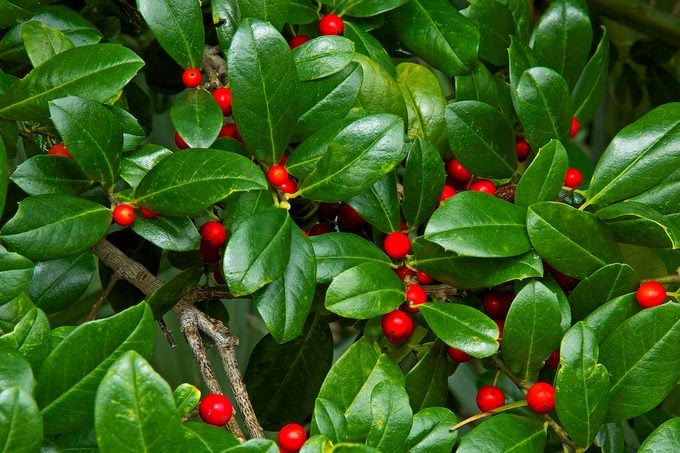
Though options at nurseries and garden centers vary widely from region to region, keep a lookout for these tried-and-true hollies.
- Dahoon holly (Ilex cassine), Zones 7 to 11. Naturally found in swampy areas, these trees are suited for wetter locations. Foster’s Holly No. 2, a dahoon-American holly hybrid, does not require a male pollinator to produce fruit.
- Winterberry holly (I. verticillata), Zones 3 to 9. This shrub loses its leaves in winter to reveal a showy display of scarlet berries on bare stems, making it perfect for bird-friendly gardens. Winter Red and Maryland Beauty are prolific fruit producers.
- Yaupon holly (I. vomitoria), Zones 7 to 9. Yaupon’s small evergreen leaves can be sheared into a privacy screen or even shaped into a topiary. It grows quickly and generally reaches heights of 10 to 20 feet, but in some cases can tower to 30 feet.
- Inkberry holly (I. glabra), Zones 4 to 9. A rounded shrub boasting small black berries that appeal to songbirds and small mammals. Watch for some leaf browning in colder areas.
- Possumhaw holly (I. decidua), Zones 5 to 9. This deciduous holly grows anywhere from 7 to 15 feet high. Sue suggests pruning Warren’s Red into a small tree and underplanting it with perennials such as Virginia bluebells and aromatic aster.
Check out 10 small evergreen shrubs to grow for year-round curb appeal.
Which Holly Tree Is Best for Birds and Wildlife?
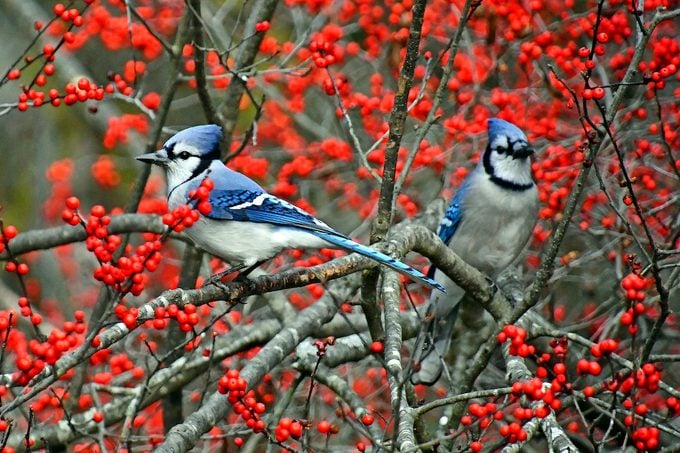
Melinda says, “American holly (Ilex opaca) is native and may be a good choice. It’s a large tree that serves as a host plant for several caterpillars, and birds adore the berries. Or consider the deciduous winterberry (Ilex verticillata), a shrub that grows between 3 and 12 feet tall. It’s hardy in Zones 3 to 9 and loses its leaves in winter, revealing berry-covered branches.
Birds That Eat Holly Berries
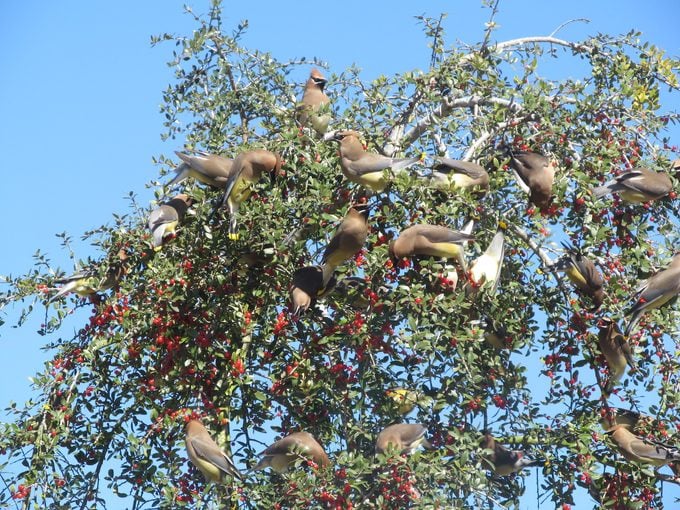
Look for these birds that love to feast on holly fruits throughout fall and winter.
- American robins
- Blue jays
- Cedar waxwings
- Eastern bluebirds
- Gray catbirds
- Hermit thrushes
- Northern cardinals
- Northern mockingbirds
Grow a black chokeberry shrub for berry-loving birds.
Are Holly Berries Poisonous to People or Pets?
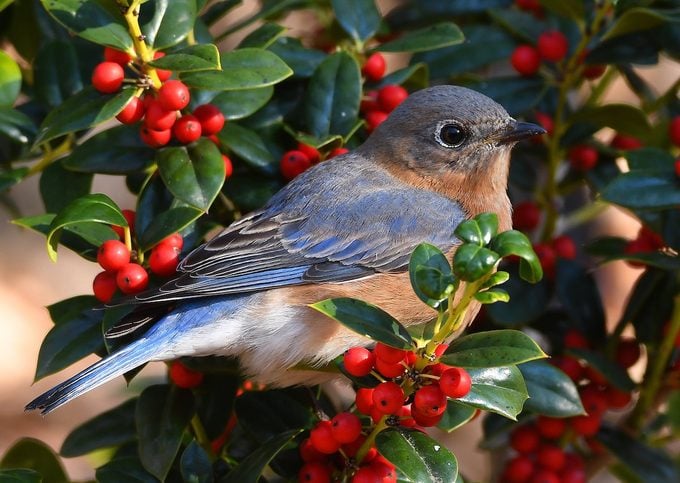
Birders and gardeners know their feathered friends love to feast on holly bushes’ berries. But it’s also worth noting that holly berries, leaves, and bark are all mildly poisonous because they contain theobromine, a substance similar to caffeine. In small amounts this won’t really affect humans, but large amounts can bring on stomach issues and more. In fact, one species of holly native to the southeastern U.S., known as Yaupon holly, has the terrific botanical name Ilex vomitoria. Native Americans even used some of these species in traditional medicines to induce vomiting.
While birds can handle the toxicity of the berries, pets like dogs and cats cannot. It’s best to keep live holly decorations out of your pets’ reach (psst—also hide the mistletoe). If you have curious pets or young children at home, try these pet-friendly indoor plants instead.
Also be cautious when planting holly in your yard if your pets like to snack on your plants. And if you like to snack on your plants, consider planting these edible flowers instead.
Are poinsettias poisonous to cats and dogs?
Bonus Fact: Holly May Protect You From Lightning Strikes
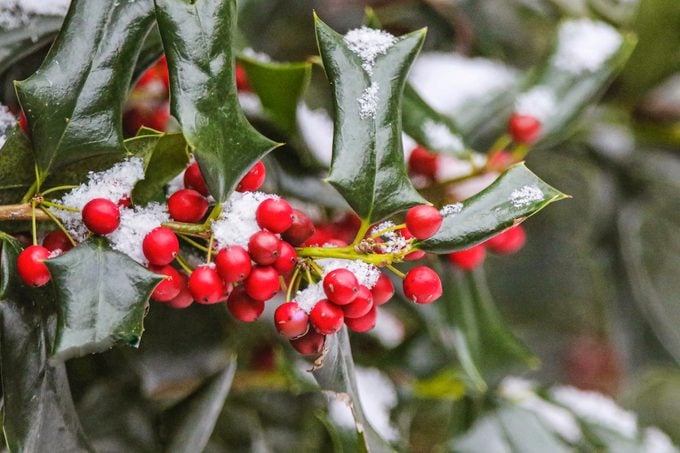
While older cultures happily trimmed holly branches to bring indoors, they felt it was very bad luck to cut down a holly entirely. One popular belief was that the thorns on holly bushes drew lightning, keeping it away from homes and barns. Interestingly, there seems to be some scientific basis to this!
According to the Holly Society, “We now know that the spines on the distinctively-shaped holly leaves can act as miniature lightning conductors, thereby protecting the tree and other nearby objects.” So feel free to prune your holly and cut branches for the holidays, but you might be tempting fate to cut it down entirely!
Next, check out 8 types of Christmas trees you can grow.
